*****English version*****

Source
The other day I was talking with some colleagues in the community and the subject of the banana or cambur, as it is known in my country, came up. It is a fruit known all over the world, I think it is consumed almost everywhere; however, it is not produced everywhere.
For example, one of the participants in the conversation told me that in his country bananas are exported. Something curious but understandable, because, as I mentioned before, it is not produced everywhere. For example, once I was talking to a girl from Argentina who told me that it is not common to see banana crops there; in fact, she told me that they brought it from Ecuador. I do not know if this is true or not, but it was what she told me and I share it as information.
If you would like to do a little more research on the subject, you can see the following link where the world banana production by country is shown:
https://www.atlasbig.com/es-es/paises-por-produccion-de-banano
As far as my country, Venezuela, is concerned, this fruit is quite common, to the point that it is part of the daily diet of Venezuelans. I remember, for example, when the economic crisis started in my country, many people were basically fed with cambur. Right now a conversation I had with a friend comes to mind, I called him to ask him about his family, how he was doing and so on. He told me that he had eaten cambur for breakfast, bread with cambur for lunch and cambur for dinner. At that time, the cambur and the mango were the lifeline for many Venezuelans.
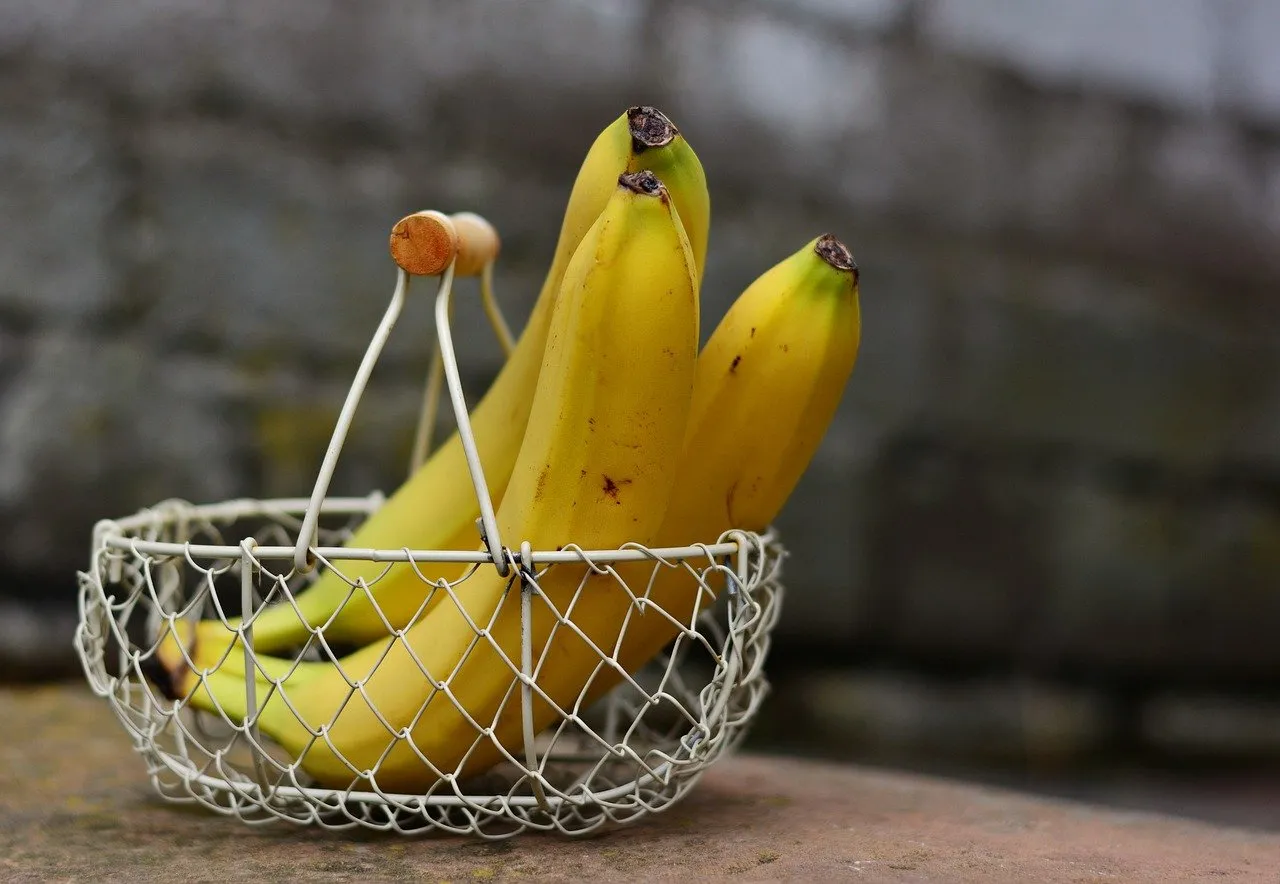
Source
I saw firsthand this increase in the consumption of the cambur. At that time I had a grocery store. I sold various products, both packaged and fresh, such as fruits and vegetables.

Own photo
I remember that before the economic situation worsened, I used to buy a basket of bananas every three or four days, but then I started buying three, four and even six baskets of bananas every three or four days, since that was the best seller. Of course, the sale of other products such as chicken, Cheetos, Doritos, Lays, which were the best sellers in the past, went down. Processed products went from being the best seller to being a secondary product.
In front of the place where I had the store, they used to have a vegetable fair. Trucks would arrive with lots of merchandise. Other merchants and I would buy from the wholesalers who came there, but the common buyer would also go there to shop for the week. In this city, it was the place where you could find the best quality food at the best price...

Source
Now, when I bought merchandise, I bought it by baskets. For example, I would buy the cambur green and then I would ripen it with a special product to accelerate the ripening process. There are places where the cambur does not ripen with its usual yellow color, but with a green color. The fruit has this color, giving the appearance of not being ripe, but it turns out that it is ripe, even though it does not have its characteristic yellow color.

Source
Based on my experience as a seller and producer of this fruit (I have several cambur plants in my backyard), this happens due to different factors.
There are many varieties of cambur and some simply do not acquire the yellow color even after ripening. Others must be cold-ripened to acquire the characteristic yellow color.
For example, a widespread practice in many stores in the area was to ripen the cambur in cold rooms. I myself got to ripen cambur in this way, a product was used to accelerate ripening and the baskets of green cambur were kept in cold rooms so that they would acquire the characteristic yellow tone. If this was not done, these were simply ripened green.

Source
In some areas of the country, the temperature is cold, so it was not necessary to ripen the cambur in cold rooms. For example, there was a producer who simply piled the baskets of cambur in some area of his field, added the product to ripen them, covered them with a cloth or a plastic tarp and after two or three days, the cambur was already ripe and with a very appetizing yellow color.
There are other kinds of camburs that do not need cold to acquire the yellow heat. I used to sell two of these varieties, such as the cambur manzano or cambur titiaro. No matter how hot it was, they did not stay green, but ripened yellow. The opposite happened with the common banana, if it was ripened in heat, it ripened with a green peel.
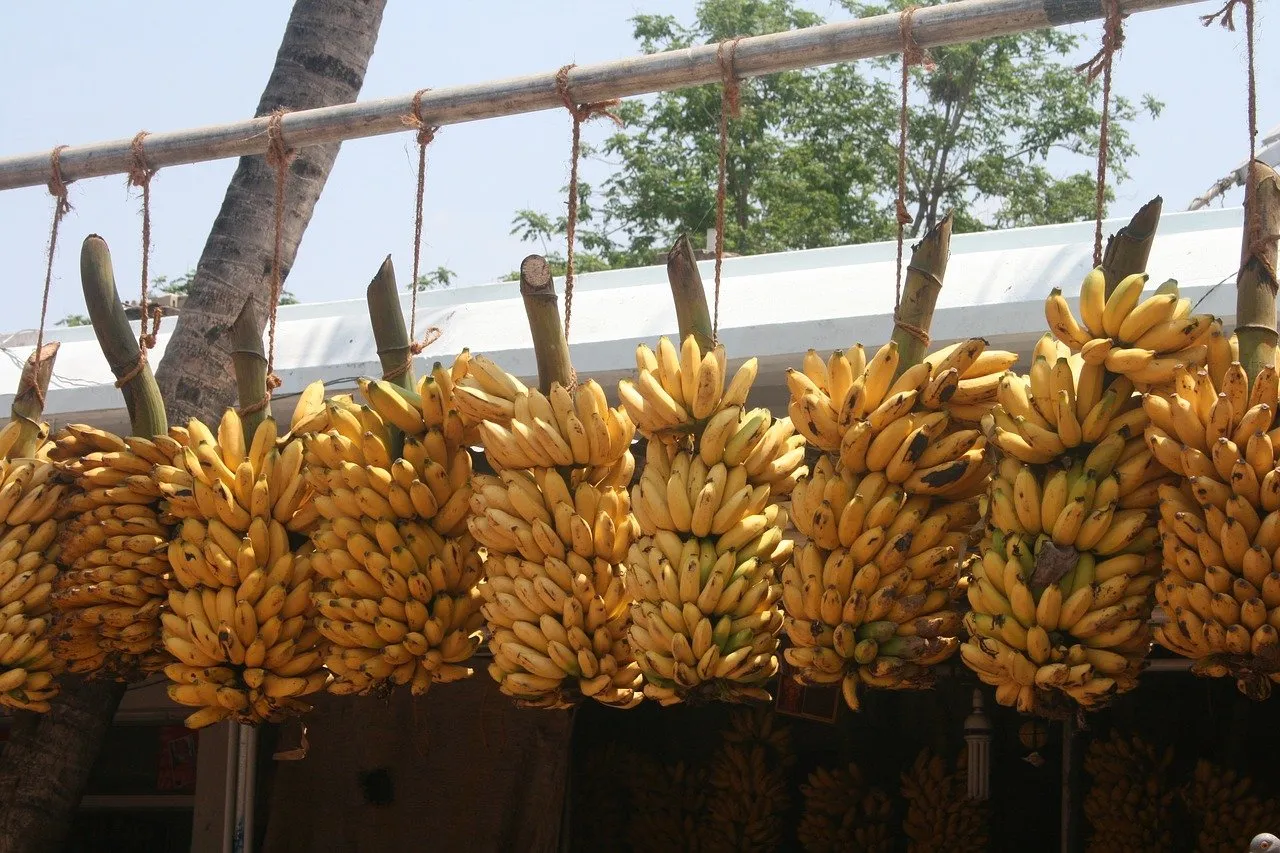
Source
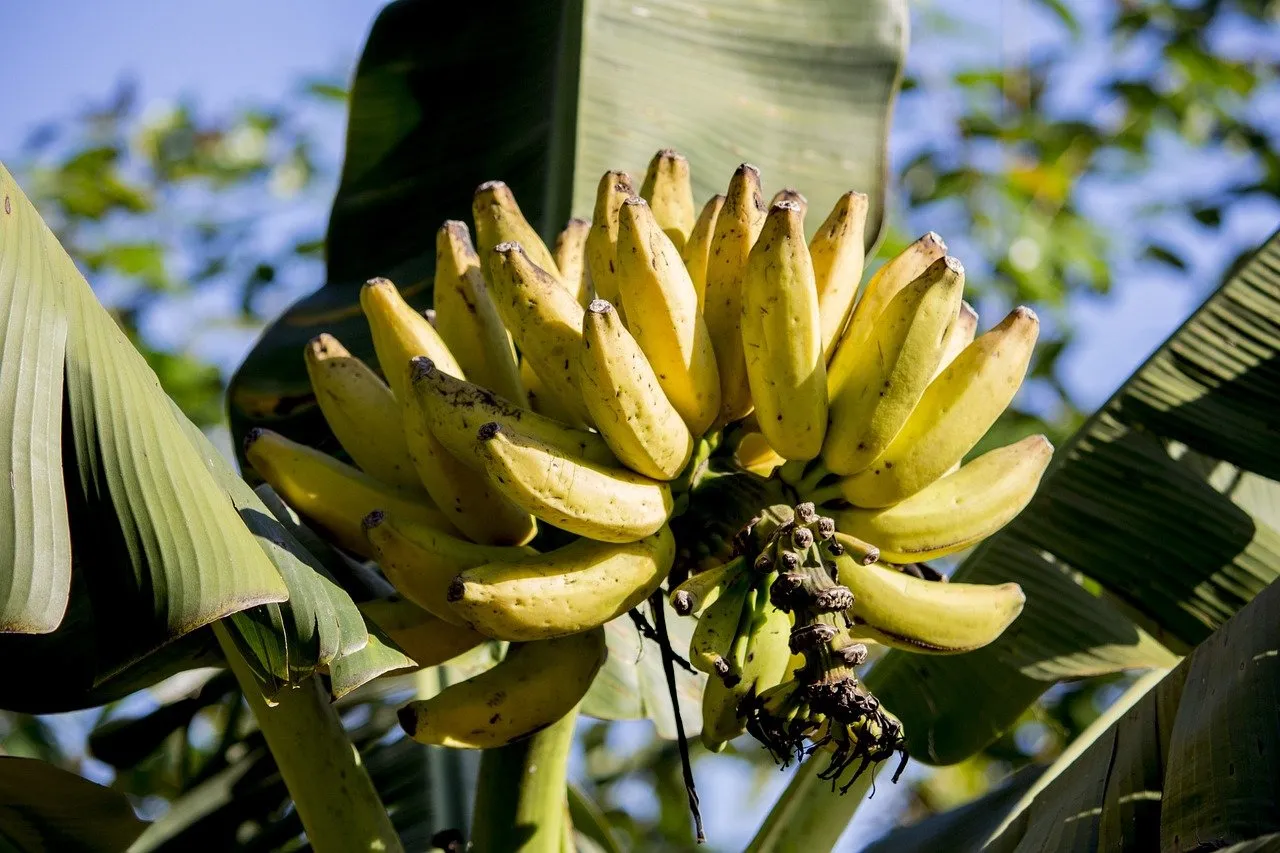
Source
However, the whole process of cold-ripening bananas is avoided when the fruit is left to ripen on the plant. Whether it is hot or cold, the fruit ripens with its characteristic yellow color. However, due to the crisis, it became difficult for the producer to acquire some products, such as the one used to ripen some fruits.

Source
It was common for the producer, the owner of the plantation, to sell the green banana in baskets and the buyer was in charge of ripening it. Now, why doesn't the producer simply let the product ripen on the plant and then sell it ripe? For different factors: birds eat the ripe fruit, thieves steal the ripe bunch of chambur or simply when it is ripe, it must be sold quickly or it will rot in a matter of two or three days, being green they keep a little longer.
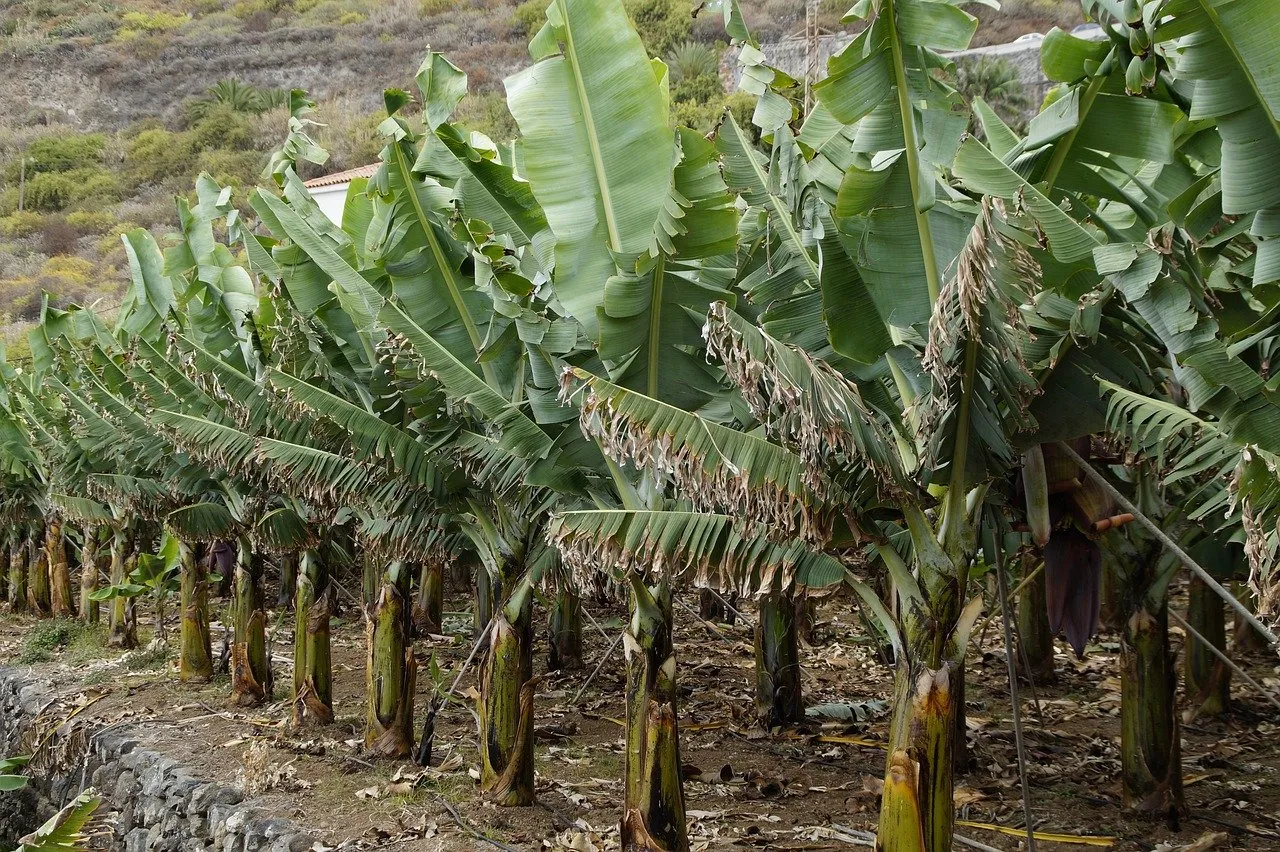
Source
In my particular case, the bunches of bananas I have in my backyard are left to ripen on the plant. After a few months, they take on a yellowish green color, which is a sign that you have to cut the bunch and keep it away from the birds, otherwise they will feast on the fruits that have been waiting for 14 to 15 months. In addition, this plant produces only one bunch during its life, so you have to take care of the product you get. Once the bunch is cut, it will continue with its normal ripening process.
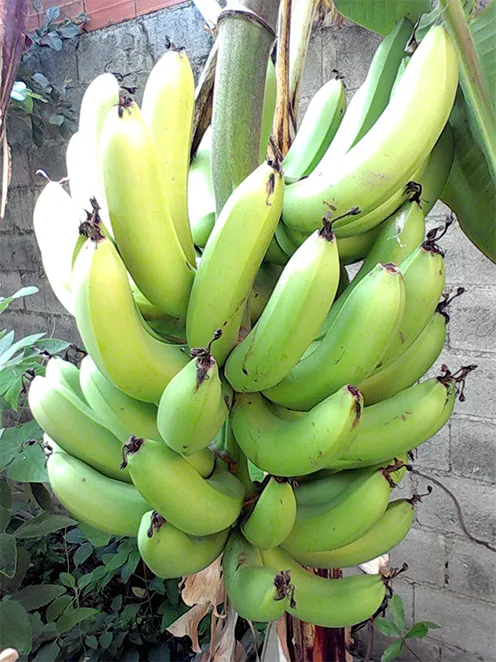
Own photo
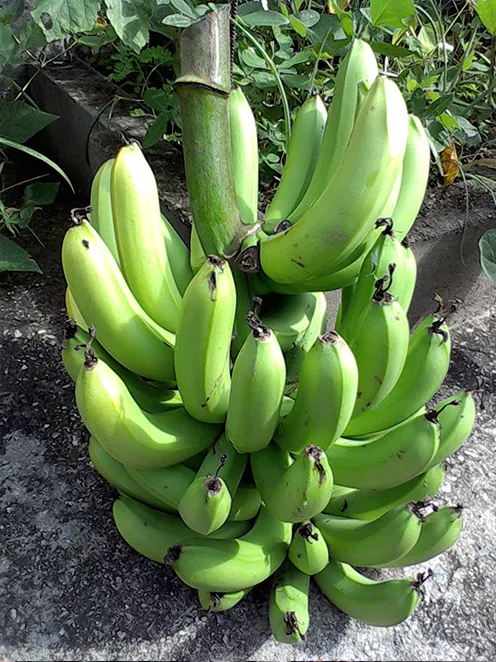
Own photo
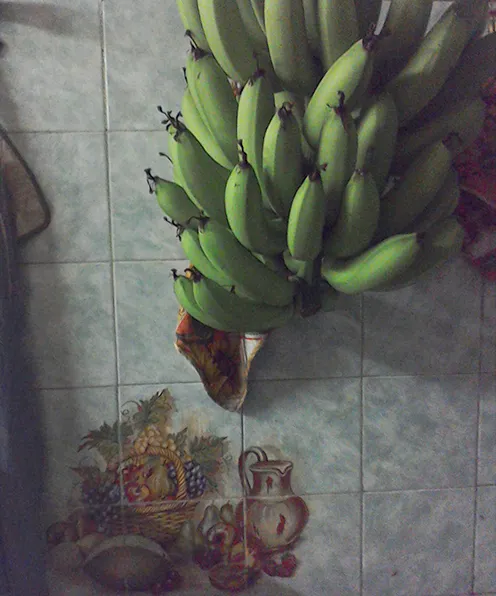
Own photo
Having said all this, what can be done with the cambur? Well, many things. During the crisis, many people used to buy a loaf of bread, open it in half and drop a sweet potato on it (without the peel, obviously) as if it were a sausage. Simple, isn't it? Well, if you are looking for a more complicated recipe, you can make a cambur cake. It is easy to prepare.
Ingredients:
-Cambur
-Wheat flour
-Oil
-Sugar
-Vanilla
-Cinnamon powder
-Baking powder
Preparation:
Crush the camburs or blend them.
Add the liquids: oil and vanilla, then mix. Add milk or water if the mixture is too thick.
Then add the dry ingredients: flour, baking powder, cinnamon and sugar. Then mix them together.
Oil is spread all over the tray where the cake is going to be baked, then a little flour is spread and finally it is put in the oven at 180 degrees for one hour. You can also do the toothpick test to make sure it is ready, insert the toothpick in the cake and if it comes out dry, then it is ready.
Just today I made a cake that turned out VERY good. Below I share a couple of pictures of the result.

Own photo
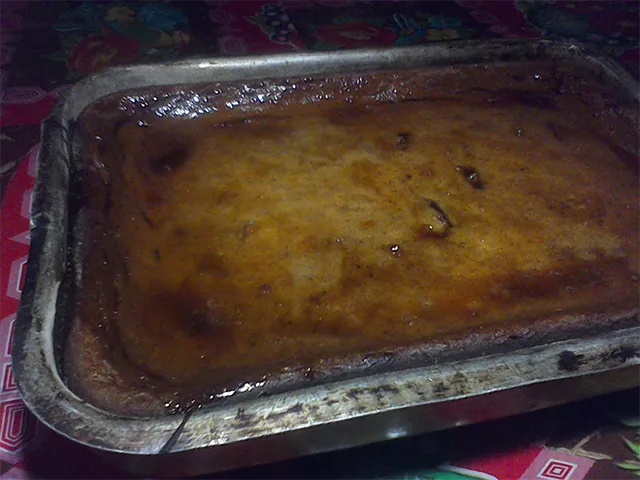
Own photo
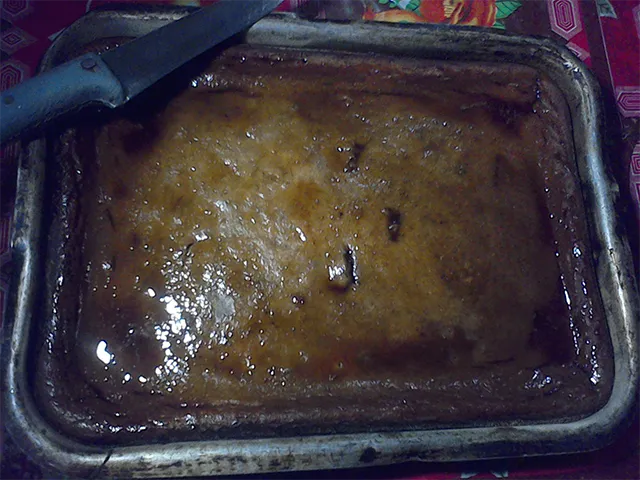
Own photo
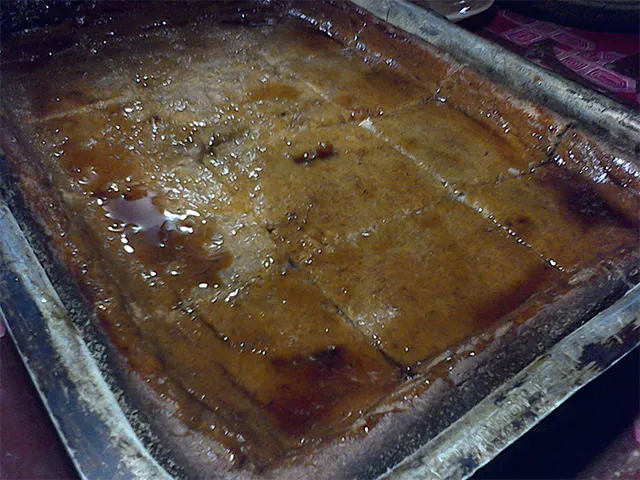
Own photo
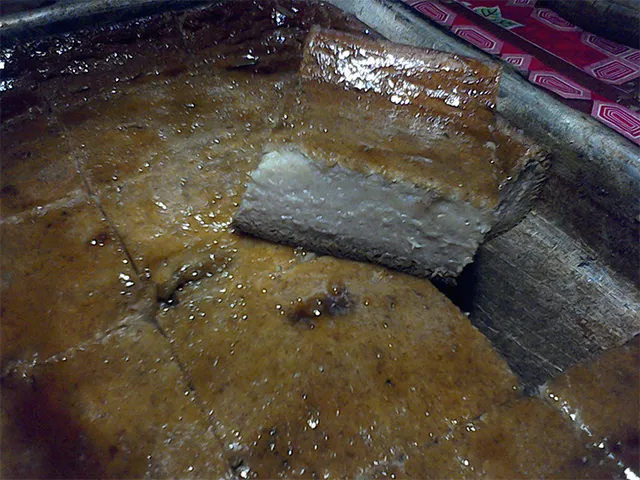
Own photo
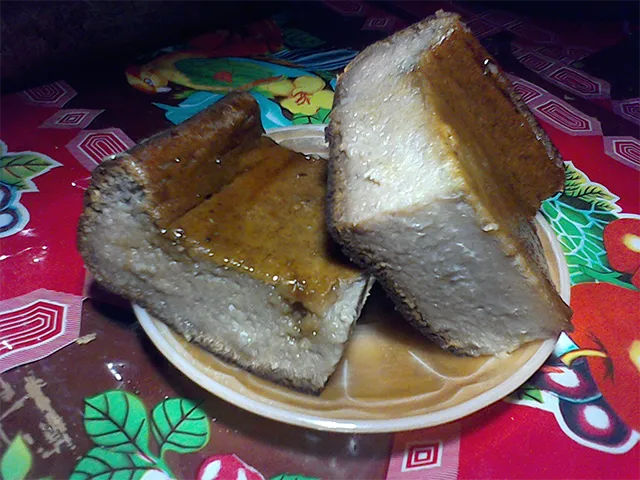
Own photo
As I said at the beginning of the publication, it is a very common product in my country, so it is something we are very familiar with. It is one of the most consumed fruits, there is also the mango, but this one is seasonal.
Well friends, I hope this publication has been to your liking or, at least, has served to distract the mind a little and learn something for a change. If you like to leave an opinion, you can do it in the comments. With nothing more to add, I'll say goodbye then...
See you next time!
*****Versión en español*****

Fuente
El otro día estuve conversando con unos compañeros de la comunidad y surgió el tema de la banana o cambur, como se le conoce en mi país. Es una fruta conocida en todo el mundo, creo que en casi todos lados se consume; sin embargo, no en todos los lugares se produce.
Por ejemplo, uno de los que participaron en la conversación me comentó que en su país se exporta banana. Algo curioso pero entendible, porque, como mencioné anteriormente, no en todos los lugares se produce. Por ejemplo, una vez estuve conversando con una chica de argentina que me comentó que no es común ver cultivos de banana ahí; de hecho, me comentó que la traían de Ecuador. Desconozco si esto es cierto o no, pero fue lo que me comentó y yo lo comparto a manera de información.
Si gustan investigar un poco más sobre el tema, pueden ver el siguiente enlace en donde se muestra la producción mundial de banana por país:
https://www.atlasbig.com/es-es/paises-por-produccion-de-banano
En lo que respecta a mi país, Venezuela, esta es una fruta bastante común, al punto en que forma parte de la dieta diaria del venezolano. Recuerdo, por ejemplo, cuando comenzó la crisis económica en mi país, muchos se alimentaban básicamente con cambur. Ahora mismo me viene a la mente una conversación que tuve con un amigo, lo llamé para preguntarle por su familia, cómo la estaba pasando y eso. Él me comentó que había desayunado cambur, almorzado pan con cambur y cenado cambur. En esos tiempo el cambur y el mango fueron los salvavidas para muchos venezolanos.

Fuente
Vi de primera mano este aumento en el consumo del cambur. En esos tiempos yo tenía un comercio de víveres. Vendía diversos productos, tanto empacados como frescos, tales como frutas y verduras.

Foto propia
Recuerdo que antes de que se agravase la situación económica, yo compraba una cesta de banana cada tres o cuatro días, pero luego pasé a comprar tres, cuatro y hasta seis cestas de banana cada tres o cuatro días, ya que era lo que más se vendía. Por supuesto, bajó la venta de otros productos como gallenas, frituras tipo cheetos, Doritos, Lays, que era lo que más se vendía anteriormente. Los productos procesados pasaron de ser lo que más se vendía a ser un producto secundario.
Frente al local donde tenía el comercio, acostumbraban a hacer una feria de verduras. Llegaban camiones con gran cantidad de mercancía. Otros comerciantes y yo, les comprábamos a los mayoristas que allí llegaban, pero igualmente el comprador común asistía para hacer las compras de la semana. En esta ciudad, ese era el lugar donde se encontraban alimentos de mejor calidad y al mejor precio...

Fuente
Ahora bien, cuando yo compraba mercancía, la compraba por cestas. Por ejemplo, el cambur lo compraba verde y luego yo lo maduraba con un producto especial para acelerar el proceso de maduración. Hay lugares en donde el cambur no se madura con su habitual color amarillo, sino con un color verde. El fruto tiene este color, dando la apariencia de no estar maduro, pero resulta que sí lo está, a pesar de no presentar su característico color amarillo.

Fuente
En base a mi experiencia como vendedor y productor de esta fruta (tengo varias plantas de cambur en en el patio de mi casa), esto sucede debido a distintos factores.
Existen muchas variedades de cambur y algunas simplemente no adquieren el color amarillo incluso después de madurarse. Otras, deben madurarse en frío para adquirir el tono amarillo característico.
Por ejemplo, una práctica extendida en numerosos comercios del área, era la de madurar el cambur en habitaciones frías. Yo mismo llegué a madurar cambur de esta manera, se usaba un producto para acelerar la maduración y se guardaban las cestas de cambur verde en habitaciones frías para que estos adquiriesen el tono amarillo característico. Si no se hacía, simplemente se maduraba de color verde.

Fuente
En algunas zonas del país, la temperatura es fría, así que no era necesario madurar el cambur en habitaciones frías. Por ejemplo, había un productor que simplemente apilaba las cestas de cambur en alguna zona de su sembradío, le agregaba el producto para madurarlas, las cubría con alguna tela o alguna lona de plástico y al cabo de dos o tres días, el cambur ya estaba maduro y con un color amarillo bastante apetecible.
Existen otras clases de cambures que no necesitan frio para adquirir el calor amarillo. Yo vendía dos de estas variedades, tales como el cambur manzano o el cambur titiaro. Por mucho calor que hiciese, estos no se quedaban de color verde, sino que se maduraban de color amarillo. Lo contrario sucedía con la banana común, si se maduraba en calor, se maduraba con la cáscara de color verde.

Fuente

Fuente
Ahora bien, todo el proceso anterior de madurar las bananas en frío se evita cuando la fruta se deja madurar en la planta. Ya que esta, haya calor o frío, se madura con su característico color amarillo. Sin embargo, debido a la crisis, para el productor se le hizo difícil adquirir algunos productos, como el que se usa para madurar algunas frutas.

Fuente
Lo común era que el productor, el dueño del sembradío, vendiese el cambur verde en cestas y que el comprador se encargase de madurarlo. Ahora bien, ¿por qué el productor simplemente no deja que el producto se madure en la planta y luego lo vende maduro? Por distintos factores: los pájaros se comen la fruta madura, los ladrones roban el racimo de cambur maduro o simplemente cuando está maduro, debe venderse rápido o se pudrirá en cuestión de dos o tres días, estando verdes se mantienen un poco más.

Fuente
En mi caso particular, los racimos de cambur que tengo en mi patio los dejo madurar en la planta. Al cabo de unos meses, estos adquieren un color verde amarillento, señal de que hay que cortar el racimo y reservarlo lejos de los pájaros, de lo contrario se darán un festín con unas frutas que se han esperado por 14 o 15 meses. Además, esta planta produce solo un racimo durante su vida, así que hay que cuidar el producto que se obtiene. Una vez cortado el racimo, este seguirá con su proceso de maduración normal.

Foto propia

Foto propia

Foto propia
Dicho todo lo anterior, ¿qué se puede hacer con el cambur? Pues muchas cosas. Durante la crisis, muchos acostumbraban a comprar un pan, abrirlo por la mitad y dejarle caer un cambur (sin la cáscara, obviamente) como si fuese una salchicha. Simple, ¿no? Pues si buscas una receta un poco más complicada, puedes hacer una torta de cambur. Es sencilla de preparar.
Ingredientes:
-Cambur
-Harina de trigo
-Aceite
-Azucar
-Vainilla
-Canela en polvo
-Polvo de hornear
Preparación:
Triturar los cambures o se licuan.
Se le agregan los líquidos: aceite y vainilla, luego se mezclan. Agregar leche o agua si queda muy espesa la mezcla.
Después se agrega lo seco: la harina, polvo de hornear, canela y azúcar. Luego se mezclan.
Se distribuye aceite por toda la bandeja donde se va a hornear la torta, luego se distribuye un poco de harina y finalmente se mete al horno a 180 grados por una hora. También se puede hacer la prueba del palillo para asegurarse de que está lista, se introduce el palillo en la torta y si sale seco, entonces está listo.
Hoy precisamente hice una torta que me quedó MUY buena. A continuación comparto un par de fotos del resultado.

Foto propia

Foto propia

Foto propia

Foto propia

Foto propia

Foto propia
Como dije al comienzo de la publicación, es un producto muy común en mi país, así que es algo con lo que estamos muy familiarizados. Es una de las frutas que mas se consumen, también está el mango, pero este es de temporada.
Bien amigos, espero que esta publicación haya sido de su agrado o, cuando menos, les haya servido para distraer un poco la mente y aprender algo para variar. Si gustan dejar una opinión, pueden hacerlo en los comentarios. Sin más que agregar, me despido entonces...
¡Hasta la próxima!

Imagenes editadas con Photoshop
Fotos tomadas con tablet HP stream 7
Traducido con DeepL
Photos edited with Photoshop
Photos taken with HP stream 7 tablet
Translated with DeepL
Últimos tres post/Last three posts:
Visitando amigos / Visiting friends [ESP/ENG]
Dos poemas y una canción - Concurso para músicos y poetas
Figura de Saturos, Golden Sun / Saturos Figure, Golden Sun


